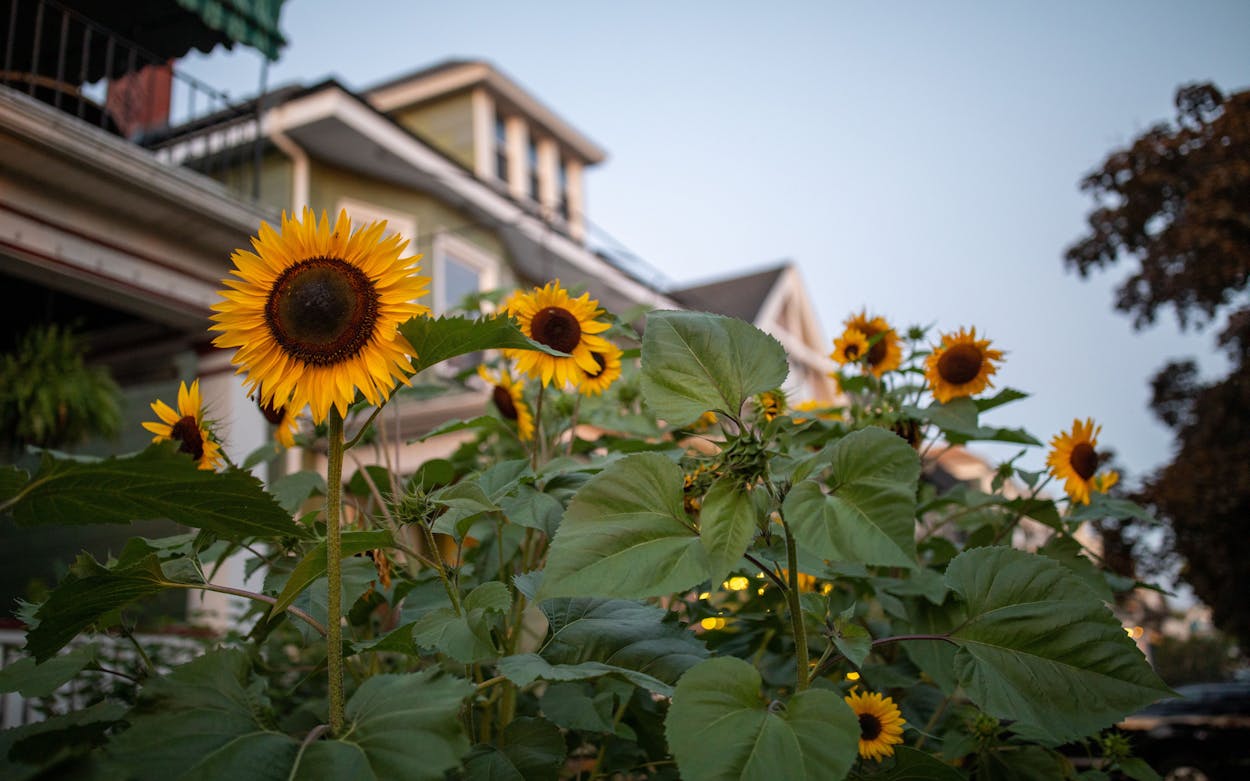Summer isn’t typically a Texas gardener’s season of choice, and this summer has been especially demoralizing. The heat, the sun, the drought, and the constancy of all three renders plants—and those who tend to them—thirsty, vulnerable, and often discouraged.
But there’s also something about the state’s spans of crunchy, sunburned grasses and drab, dormant vegetation that can ignite a desire to nurture and care for something green—to seed and then see something hopeful poke through topsoil and remind you of a more hospitable time of year. If you’ve got a midsummer gardening itch (and have confirmed it is not some sort of bug bite), there are still a few things you can do to responsibly and consciously garden through the warmest months.
Andrea DeLong-Amaya, the Lady Bird Johnson Wildlife Center’s director of horticulture, doesn’t beat around the likely dormant bush, however: “Now is the worst time to plant anything,” she says. “Without rain, and with the intense heat, watering any transplants or seed will take extra effort and precious resources.” She instead encourages those eager to see their nails again rimmed with soil to be patient. “Planting in fall would be the most responsible use of water needed to establish new plantings from transplants or seed.”
When pressed, DeLong-Amaya suggests only two native varieties that she’d condone planting right now: common sunflowers and partridge pea. Both boast friendly yellow flowers upon bloom and are as well-suited as a plant can be to survive in Texas’s unrelenting summer weather.
Those who plant sunflowers in July are still looking forward to another three or so months of possible blooms. Typically, sunflowers take two to three months to mature from seedlings to blooming stalks. As promised in their namesake, sunflowers are ideal for summer gardens because they prefer full sun and don’t mind dry soil. Sunflowers are also extremely good at attracting and providing for local birds, who love to feast on the flower’s seeds. Because they prefer up to eight hours of direct sunlight, there aren’t a ton of limitations on where you can plant sunflowers in your garden. Something to keep in mind, especially with the giant varieties, is large blooms can shade other plants in your garden; to account for this, opt for a sunny spot on the north side.
While some sunflower varieties thrive in portions of West Texas, partridge pea is better suited to the eastern half of the state. The plant does best in full sun, requires little watering, and will still bloom even under stressful conditions. Also known as “sensitive plant,” partridge pea temporarily collapses when touched. It is a preferred snack of deer and some quail species and often sees blooms through October.
There are, of course, many nonnative species from similarly hot and dry regions that can withstand a Texas summer. For Texans missing the wildflower-dotted highways of spring, zinnia varieties can prove a resilient and almost drought-tolerant substitute. These cheerful flowers—a favorite of butterflies and hummingbirds—prefer to be planted in full sun, but still need fairly moist soil as they root and grow. Zinnias planted now will see a bloom in early fall.
If you do venture out into the garden this month, the usual cautions for extreme heat apply. “Wear a hat and sunscreen, work in the morning while it is less hot, and seek shade as much as possible,” DeLong-Amaya says. “Some Texas gardeners have been known to garden at night with a headlamp.”
There’s also, always, the respite of indoors. “Take advantage of a cold drink and a comfy chair. This is a great time to learn about new plants and dream and plan for your fall garden,” DeLong-Amaya says. For eager July gardeners looking ahead, now is an excellent time to familiarize yourself with your local climate and species and varieties of plants native to your region. It could be worth investing in a planner to help you map your seedlings come fall, or take advantage of a free one online. With still weeks of precious gardening downtime to come, it can also be nice to pore over seed catalogs and fully luxuriate in the search for local seed sources, of which there are plenty across the state. There’s also a variety of vegetables that can be sowed inside this month or next with the intention of being transplanted to a garden in late August or when temperatures drop slightly in September. This includes okra, cauliflower, broccoli, and many varieties of peppers and Southern peas. Sowing indoors not only keeps you cooler, but affords you better control over a seedling’s comfort and ensures precious resources aren’t being wasted. The decision to seed a plant indoors should be made on a case-by-case basis, as it’s not suited to all species.
For Texas gardeners who are opting to sit summer out and are discouraged by the limitations extreme heat places on the pastime, DeLong-Amaya offers a reminder: look around. There are plenty of blooming, thriving species to be enjoyed right now. “Some Texas plants continue blooming right through our crazy heat,” she says. “Right now the flame acanthus, Turk’s cap, wax mallow, frogfruit, and others are all going strong at the Wildflower Center.”
- More About:
- Hill Country
- East Texas
- Austin






